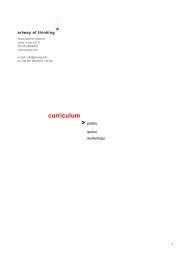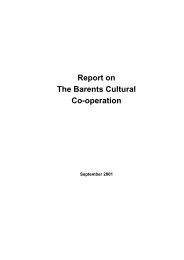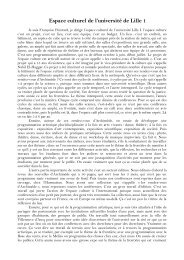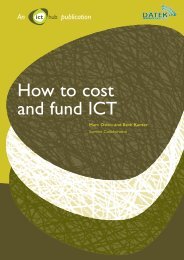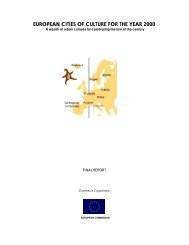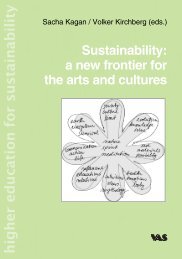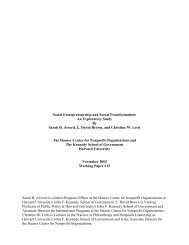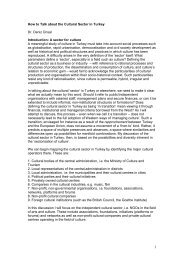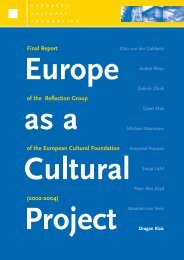A guide to the export and import of cultural goods between Russia ...
A guide to the export and import of cultural goods between Russia ...
A guide to the export and import of cultural goods between Russia ...
You also want an ePaper? Increase the reach of your titles
YUMPU automatically turns print PDFs into web optimized ePapers that Google loves.
The exhibition Europe-<strong>Russia</strong>-Europe. State Tretyakov Gallery, Moscow, May-July 2007<br />
International <strong>cultural</strong> cooperation can take place in <strong>the</strong> context <strong>of</strong> bilateral <strong>and</strong> multilateral<br />
agreements <strong>between</strong> countries. Many <strong>of</strong> <strong>the</strong> EU countries in this book refer <strong>to</strong> such agreements<br />
with <strong>Russia</strong>. These <strong>and</strong> o<strong>the</strong>r programmes managed by embassies <strong>and</strong> diplomatic<br />
missions may be organised within <strong>the</strong> framework <strong>of</strong> <strong>cultural</strong> diplomacy <strong>and</strong> foreign policy<br />
objectives. Cultural diplomacy also informs <strong>the</strong> funding <strong>of</strong> national <strong>cultural</strong> institutes, such<br />
as <strong>the</strong> British Council, Goe<strong>the</strong> Institut, Italian Cultural Institute <strong>and</strong> Institu<strong>to</strong> Cervantes,<br />
which promote <strong>cultural</strong> events <strong>and</strong> o<strong>the</strong>r projects abroad.<br />
European Commission programmes in <strong>the</strong> <strong>cultural</strong> field, such as Culture 2000, have<br />
funded many projects, networks <strong>and</strong> o<strong>the</strong>r actions <strong>to</strong> promote <strong>cultural</strong> cooperation over<br />
recent years. These have involved numerous artists, <strong>cultural</strong> opera<strong>to</strong>rs <strong>and</strong> heritage pr<strong>of</strong>essionals<br />
across <strong>the</strong> EU <strong>and</strong> in c<strong>and</strong>idate countries. The mobility <strong>of</strong> artworks <strong>and</strong> artists<br />
is a current programme objective for <strong>the</strong> new Culture Programme (2007–2013). A new<br />
programme <strong>to</strong> support EU <strong>Russia</strong> <strong>cultural</strong> cooperation initiatives was launched in 2007<br />
through <strong>the</strong> Delegation <strong>of</strong> <strong>the</strong> European Commission <strong>to</strong> <strong>Russia</strong>.<br />
The art trade relies on <strong>the</strong> movement <strong>of</strong> art works, antiques, furniture <strong>and</strong> o<strong>the</strong>r artefacts<br />
across international borders. Auction houses will frequently receive an object in one<br />
country, place it in a sale in a second country <strong>and</strong> <strong>the</strong>n organise transportation <strong>of</strong> <strong>the</strong><br />
object <strong>to</strong> a third country where <strong>the</strong> buyer is located. The same is true for international<br />
art <strong>and</strong> antique dealers who sell work through specialist fairs around <strong>the</strong> world. At <strong>the</strong><br />
<strong>to</strong>p level, <strong>the</strong> international art trade knows no borders, although buyers <strong>and</strong> sellers must<br />
9



